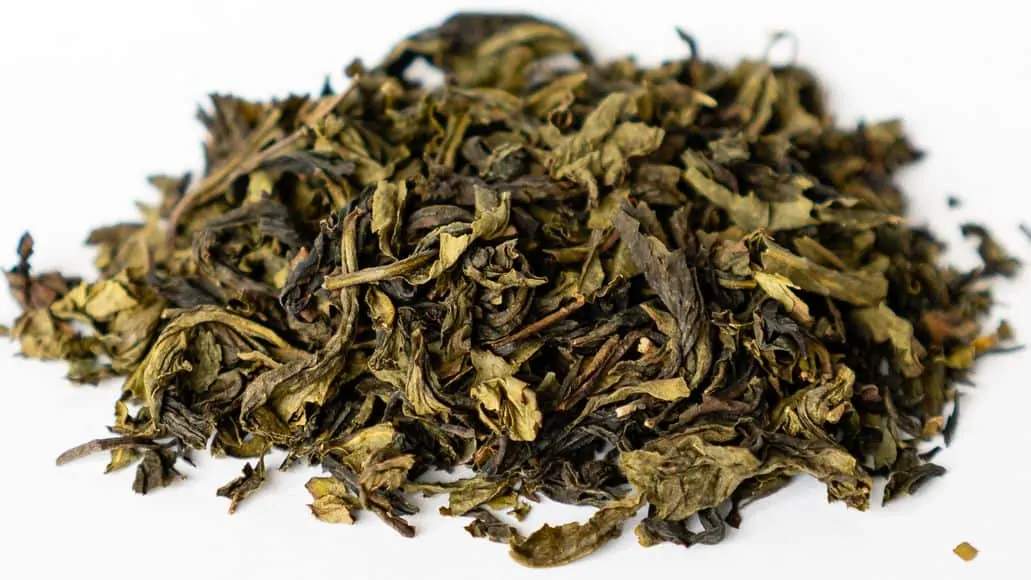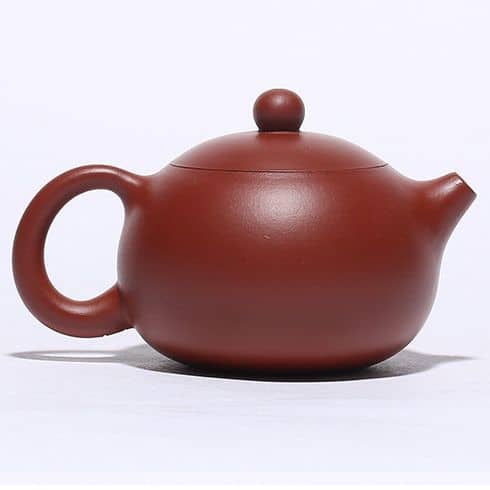Pouchong is an oolong tea from Taiwan. Pronoucned “Bao Zhong” in Mandarin, it is the lightest and most floral of all the oolong teas. It is only 8-10% oxidized and actually falls somewhere between a green tea and a standard oolong tea.
It is usually classified as an oolong though, as it lacks the sharper flavor of a green tea. Instead, it has a rich, mild taste with a floral and melon aroma.
Table of Contents
Where To Buy Baozhong Tea
This tea can be found in many specialty tea shops or through a number of online tea vendors. If you are unsure where to begin, you can check out some of my recommendations below.
How To Prepare Pouchong Tea
The preparation instructions given here are for loose leaf teas. For tea bags, you can just follow the instructions given on the box.
The ideal brewing temperature is 90-95ºC (194-205ºF), which is just below the boiling point. You can just boil the water using a simple stove-top kettle and then let it cool for 30 seconds.
If you plan on trying a lot of varieties of tea and/or coffee it might be worth it to invest in a water boiler/warmer like this Zojirushi water boiler or an electric kettle with a variable temperature setting.
Personally, I recommend this Cuisinart kettle, because it has presets for every type of tea, so you always get the perfect temperature:
Baozhong tea is best brewed in a porcelain vessel, like a gaiwan or in a traditional yixing, a teapot made from a purple clay.
Brewing Instructions
- Fill both the teapot and the cup about halfway with hot water to preheat them. Tilt them a bit so that the water creeps up the side and then rotate them so the insides get wet all the way around. Then pour the water out.
- Put 2 teaspoons of tea leaves into the teapot. If using a different vessel, use 2 teaspoons for every 8 oz. (236 ml) of water.
- Fill the teapot with 90-95ºC (194-205ºF) water.
- Place the lid on the teapot and let the tea steep for 2-3 minutes.
- Pour the tea into the teacups and enjoy your tea!
- You can get 3-4 infusions out of most varieties. Increase the steeping time 30 seconds or so for each infusion. How many infusions you do depends entirely on your taste. Experiment.
Use the amounts given in these instructions as a rough guide. If you find the resulting tea too weak, add more tea leaves; if it is too strong, reduce the amount of leaves used. Similarly, try increasing or decreasing the steeping times.
Best Pouchong Teas
Pouchong is a very difficult tea to find online. In fact, the only place I’ve found good ones is Amazon. And even they only have very few worth getting.
Easily the best among them is the Taiwan Huang Shan Bao Zhong from Tealyra. This hand-picked tea is incredibly smooth to drink and the price is excellent.
Amazon has one other tea I really like and one that actually took first place in the North American Tea Championship both years it was entered (2006 and 2008). But it is not strictly a Baozhong, because it includes coconut.
It is the Coconut Pouchong from Golden Moon Tea. It uses real roasted coconuts to add a smooth and creamy flavor to the tea. It is definitely worth trying.
More Information About BaoZhong Tea
Since Pouchong tea is only barely an oolong tea (and one that many people actually classify as a green tea) is is very delicate and mild, with a sweet, floral fruity flavor. Many consider it to have the best of both worlds: green tea and oolong tea.
The name actually refers to a part of the processing method. Baozhong (Pouchong is an older way of writing the same word in our alphabet) in Mandarin means “wrapped in paper”. It is no longer processed this way today, but in the past, the leaves were wrapped in paper during the drying process.
This oolong tea is produced at a low altitude of 400 to 800 meters above sea level in Pinglin District, New Taipei, Taiwan, which is a cloudy and foggy area, so it does not get much sunlight. This results in more antioxidants, vitamins and minerals in the leaves.
Its main season is spring, from March to April with a second season in winter from October to November. It is generally picked toward the end of March and the larger dark leaves are used.
After picking, the leaves are withered to remove some of the moisture. This begins outdoors under the sun and continues indoors over night.
After this, they are briefly tumbled. This serves to break the cell walls to encourage oxidation, but this process is very short, unlike with most oolong teas, which is the main reason this one is so much less oxidized.
Traditionally, the leaves were then wrapped in paper and dried to prevent oxidation. Today, they are heated to dry them further and halt the oxidation process. The temperature used is only 70 degrees Celsius, which means the leaves are not roasted. This is another big difference between Baozhong and most other oolong teas.
The final appearance of Pouchong leaves resembles a rope and is curled up, with a deep green color and small light-gray spots.
Bao Zhong tea was actually produced in mainland China first, but was brought to Taiwan in the late 19th century. It was planted in a subtropical jungle near the capital Taipei.
Today it is still grown in this area, though moved slightly. It began in the Nangang district, but nowadays, most of the production takes place in the neighboring Wenshan and Pinglin districts.
At first, it was always scented with jasmine blossoms, but the production process evolved a lot during the Japanese occupation. As a result of the newer production methods, the tea became more floral, eliminating the need to add any additional floral flavoring, like jasmine.
At the time of Japanese occupation, business boomed as the Japanese purchased so much tea that production had to expand considerably to meet demand. That is when production went from just Nangang district to also including Wenshan and Pinglin districts.
When the Japanese left, sales suffered. Farmers in Nangang moved on to other crops, but those in Wenshan and Pinglin continued growing this Taiwanese oolong tea and do so until this day.




Leave a Reply